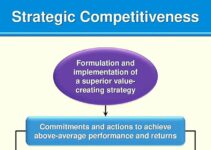Introduction
Healthy and effective communication plays a significant role in the professional business workplace. Just like you can’t establish an honest relationship without effective communication, and the same thing goes for the business and professional life. Today, we’ll discuss how to improve communication in workplace.
How to Improve Communication in Workplace
According to a study by Watson Wyatt, companies having effective communication have got approximately 50% low turnover levels than industries with average communication levels. However, many businesses and companies face issues in their communication channels now and then, and it causes frustration and misunderstanding. Some of the main suggestions in learning how to improve communication in workplace are as follows;
Trust Foundation
If you have a strong foundation of trust within the company, then employees would openly share their views in the occurrence of any problem. Therefore, you should develop rapport with employees in order to gain their trust. When you have their trust, then they would be willing to come forward to talk about the problem.
For instance, a boss takes his/her new employees and teammates to lunch, s/he inquires about their lives, their likes/dislikes, and their choices and preferences. It may seem like an ordinary gesture, but it breaks the ice and opens the line of communication between the boss and the employee.
Prove it with Actions & Words
According to APA (American Psychological Association), approximately one-quarter of the employees have trust issues with their bosses. When you have a trustworthy environment, then communication would be effective.
You can’t establish a trustworthy relationship by words; you have to prove it with your genuine interest and action. Only then your team member would come to you in the challenging time in order to collaborate and deal with the problem.
Regular Meetings
Establishing an open line of communication requires one on one meeting regularly. Employees may think that the boss would interrupt their busy day to talk about the company’s victories, issues, and challenges. Instead, you should give a personal touch to the meeting by talking about the inner functionality of the office.
For instance, employees have one-on-one meetings with managers, directors, and HOD. It could be during the coffee break, walking down the lobby, stairs, or in the elevators. It would clear the air and employees would feel comfortable without getting stuck in the organizational ranks.
Tell them why
People get the idea of the sales board meeting. It may sound silly; however, you should tell them about the purpose of the meeting without using a condescending tone. Your tone should be informative, friendly, and positive.
However, it provides an opportunity for open communication and questioning when you’re delivering the information. It’s important that you should develop a connection between their work and the company’s goals.
Listen
When we talk about effective communication, then it’s a two-way street. You can’t have complete communication when you only deliver the information and don’t listen. Therefore, you should clarify, ask questions, avoid multitasking, and follow the conversation style. It’s difficult to be an active listener; however, it’s worth doing it.
Don’t Make Assumptions
The biggest communication problem in the workplace is when you assume things based on a misunderstanding. However, if you see employees underperforming in their strong areas, then don’t jump to conclusion that they’re slackers.
When you deal with the situation and then try to find the main cause of the problem. You would find various answers when you ask them about the problem like they’re not handling well many projects at once, having a difficult time focusing, or everything is fine.
Know Strengths/Weaknesses
There are various ways of finishing the job. It’s important that you should be familiar with the strengths and weaknesses of your team members. For instance, some of your employees are good at ideation and input, while others at focusing and accepting challenges. When you know their strengths and weaknesses, then workplace communication would be effective.
Preferred Communication Method
It happens that some of the employees are highly responsive in the communication, and the others are slow. You should know the preferred communication channel of the employees. It could be Slack, in-person chat, or email. Therefore, you should observe and ask them about their preferred communication method.
Be Consistent & Follow up
The best way to maintain communication at the workplace, when you do regular follow-ups and checks on them. When you’re following up on them, what type of things you’re expecting from them, whether your employees are aware of your visit or not. However, it’s very frustrating to know that the boss was expecting something else at the end of the project. You should have an open line of communication to avoid it from happening.
Meeting Tone/How to improve communication in workplace
The agenda of the meeting, host of the meeting, and email the meeting’s agenda before time, so people should know what is going to happen. If you’re offering constructive feedback, then it would improve the communication.
Constructive Criticism
Many businesses and companies arrange sessions and provide constructive criticism. However, some aggressive managers are silent and don’t provide feedback, and it shuts down all chances of trust. Therefore, you should focus on the behavior of the person instead of discussing someone’s character. You should let them share their thoughts and views.
Compliments
If your employees are doing a good job, then you should pass the positive complement. It would make them think about the good element in the job, and they would try to do it again if they know about it. However, if you’re precise about the compliment that how it has increased the sales and help the customers, then it would be more helpful.
Transparent Workflow
You should be transparent about the workflow and the project details like the deadline of the project, the responsibility of the project, and the expected results from the employees. When everything is clear and transparent, then it reduces the misunderstanding among team members.
Clarify various roles
One of the main reasons that the communication at the workplace breaks down is because that the employees’ roles aren’t clear. The roles would clear when you have a transparent workflow. Therefore, you should divide the roles, final approval authority, and various channels the project has to go through.
Flexible Conversation Style
There are different styles of communication for different occasions. For instance, you can’t ask or talk about someone’s personal family question in front of the team. Slack is a great tool for a group chat about work and meetings. However, it doesn’t tell the feelings of the people. Like they’re present in the meeting, but mentally distracted until you make any decision.
Avoid Overuse of tools
Slack, emails, chat, and other tools for communication are great, but they can’t replace face-to-face communication. It avoids all sorts of misunderstandings and miscommunication.
Feedback
Constructive feedback and criticism are the best way to amplify the effectiveness of communication at the workplace. For instance, you should ask for additional feedback during the face-to-face meeting. The feedback allows you to avoid wrong assumptions and misunderstandings. It could positive and negative, but it would provide you a deep insight.
Clear Processes
If the project is big and you’re dealing with multiple stakeholders, then it increases the possibility of miscommunication. Therefore, you should work on the process of the project and make it better. While working alongside people and their feedback would help you to improve it.
Onboarding of Employees
It shouldn’t be difficult to learn the functionality of the workspace. You should arrange the training session for the new recruits and make the data accessible in the form of a document, audio, and video record. The Q&A session and directory should provide information to the people. It would allow the new employee to keep the communication channel flowing effectively.
Examine Current Communication strategy
If you aren’t aware of the company’s communication channel, then you can’t improve it. Whether it is emails, telephone, slack, chat, or other; every channel has its strengths and weaknesses. Once you study and analyze it, then you would know what channel is perfect for the company under the prevailing circumstances.
Conclusion: How to Improve Communication in Workplace
After an in-depth study of how to improve communication in workplace, we’ve concluded that the smooth functioning of the company requires an effective communication system. If you want to improve the communication system in the workplace, then follow the above-mentioned suggestions.

Ahsan Ali Shaw is an accomplished Business Writer, Analyst, and Public Speaker. Other than that, he’s a fun loving person.


